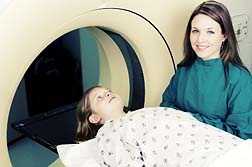 Dr. Rita Redberg, a cardiologist and researcher at the University of Californian in San Francisco said in the New York Times this morning that the increased levels of radiation would probably result in tens of thousands of additional cancers. It should be noted that each individual patient is at relatively minor additional risk from such imaging tests said Dr. Redberg, who was not connected to the study. However, due to the fact they are administered to so many people the cumulative risk is significant.
Dr. Rita Redberg, a cardiologist and researcher at the University of Californian in San Francisco said in the New York Times this morning that the increased levels of radiation would probably result in tens of thousands of additional cancers. It should be noted that each individual patient is at relatively minor additional risk from such imaging tests said Dr. Redberg, who was not connected to the study. However, due to the fact they are administered to so many people the cumulative risk is significant.CT, or 'Cat' scans as they are often called, have been rising in recent years—thanks in part to the availability of the units at more hospitals. Even physicians have purchased, and installed both C T and PET scanners in their offices and clinics. Under federal rules, physicians are allowed to profit from use of the machines they own, fuelling speculation that financial profit is one of the drivers behind increasing tests.
However according to Dr. Harlan Krumholz, a cardiologist at Yale and author of the paper, there are other factors.
"I think the central driver is more about culture than anything else," Dr. Krumholz said. "People use imaging instead of examining the patient; they use imaging instead of talking to the patient."
The study revealed that at least four million Americans under the age of 65 are exposed to high levels of radiation, with 400,000 of those patients receiving very high doses—more than the maximum allowable exposure for nuclear plant workers are anyone else who handles radioactive material.
READ MORE MRI Health Risks LEGAL NEWS
Those figures suggest that about four million Americans receive cumulative doses exceeding 20 millisieverts a year.
Lead author Dr. Reza Fazel, a cardiologist at Emory University, said in comments appearing in the New York Times this morning that use of scans appears to have increased during the two-year period covered by the study.
Dr. Michael S. Lauer, director of prevention and epidemiology at the National Heart, Lung and Blood Institute, used an editorial accompanying the paper to call for large clinical trials that would assess whether the scans improve care and lead to better outcomes for patients.
